On the antique Grenell Island map that we have hanging in our cottage, there is an inset in the lower left-hand corner that shows Grenell in relationship to neighboring islands. On that map, the island to our north is labeled Hemlock Island. Of course today, it's known by a different name—Murray Isle.

As I prepared to write Grenell 1881, Book 1 of the Thousand Island Series, I found little written about Hemlock Island in the 1870s and early 1880s. The best description of the early years of Hemlock Island (Murray Isle) was from a long-time but unnamed Murray Isle resident who was quoted in an article written in 1955 for the Watertown Daily Standard:
“To us old time river residents, no other resort brings forth sentimental memories as does that of Old Hemlock Island. As boys we climbed its rugged exterior in summer in quest of wild berries, and in autumn in pursuit of wild birds that nearly always got beyond the reach of our antiquated shotguns.”
“We fished along its rock and marshy shores by day and speared by night jack-light the stupid bullhead, and jabbed at the elusive eel that more often was elsewhere when the spear reached the spot where he had been reposing.”
“We visited Uncle, as we called him, Dan Sherman, when he and his family resided at the log house near the shore of the bay back of the present summer home of General Johnson. We there learned first hand how to skin and wash a bushel of eels, and to tie strings under their chins to hang them in a barrel smokehouse to slowly roast and become saturated with the smoke odors from a kettle of dry rotten wood to become a delicious relish when done.”
“But those days of real joyous entertainment and freedom to roam at will have passed away, and elegant summer homes are now occupying the once almost impenetrable thickets of worthless brush and bramble.”
I thought the above description of Hemlock Island was delightful. I used it as a springboard for a scene where my characters visit Dan Sherman and learn about eels in Grenell 1881. I was knowingly about 20 years off. Dan Sherman was long gone by 1881. I’ve recently found a newspaper article that reports that he sold to John Keech, Sr. and Captain Jack Taylor in 1862.
I knew there were cottages on Hemlock Island in 1881, but I wasn’t sure where they were or who owned them. This fall, I decided I needed to fill in this information gap and threw myself into researching Hemlock Island before the Murray Hill Hotel was built. The logical first step was to not just skim, but to read, index, and dissect Margaret Nulty’s 1972 book, Murray Isle. I made a list of names and dates. Using this list as a starting point, I dove into the newspaper archives. From the book and newspaper records, I now have a sense of the first summer people on Hemlock.
Like Grenell, the first buildings on Hemlock were on the east end of the island. The first summer cottages were built between 1875 and 1877. Two were built in 1875. A third was built in 1876 and the Cliff House was built in 1877. Our ancestors would have been able to see all four structures from our point on Grenell.
One of the cottages—if it was a cottage, it was only referred to as a camp—was built on what we call Wintergreen Island by a man with the last name of Clark who soon sold to Wilbur F. Porter, former mayor of Watertown. Nulty reports: “The only recollection about the Porters concern a boat named the Merry Monarch and two Great Danes that raced the paths terrifying everyone. By 1895 the island [Wintergreen] had been sold to General Johnston who built the large house and outbuildings there now.”
Between the Clark camp on Wintergreen and Cliff House on the rocky southeast point of the island were two cottages directly across from our cottage on Grenell.
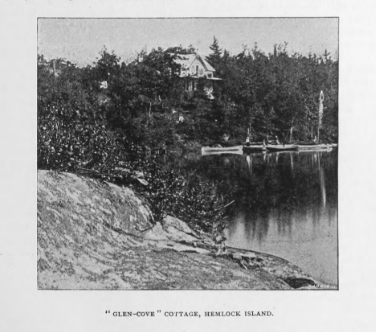
The first cottage built was that of the Hon. Henry Spicer from Perch River and later, Dexter, NY. In his book Souvenir of the Thousand Islands, John Haddock describes the Spicer Cottage like this: “Standing well up from the River’s edge on Hemlock Island, one mile west of Thousand Island Park, is the cottage shown above, built in the winter of 1875-6, being one of the earliest upon the River. It is the summer home of the Hon. Henry Spicer, for nearly his whole lifetime, a resident of Perch River.”
Nulty describes the first summer cottage on Hemlock Island like this: “In 1875 Henry Spicer lived on a farm in Perch River, NY, from which came timbers and boards cut on his own farm for his house. The timbers are pegged, the nails used in the boarding hand-wrought. From correspondence with Mr. Spicer’s daughter, the Russells [second owners of the cottage] have learned that the upstairs was originally two big dormitory rooms, one for the girls and one for the boys, frequent houseparty guests from Clinton Collegiate Institute. She remembered a hotel on the point, a great deal of sailing in the family catboat, Guess, and a beautiful music box.” The cottage was named Glen Cove.
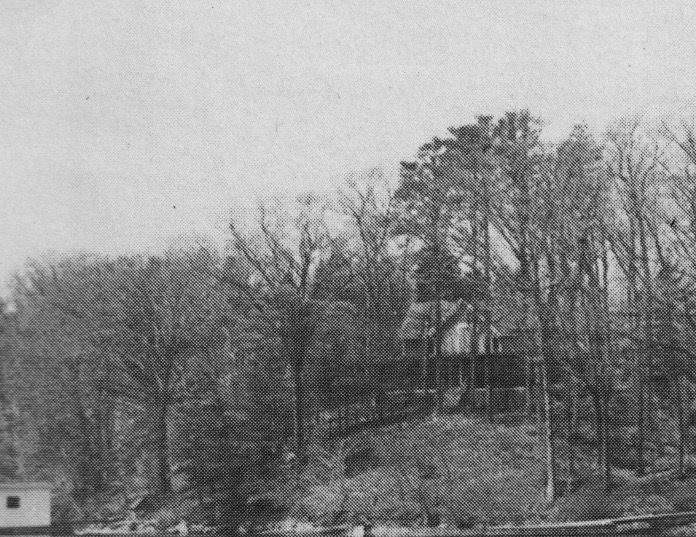
A year later, just east of the Spicer cottage, Col. James T. Watson built a cottage, which he called Bontekoe Cottage. Today, I think it’s simply known as the Bogaert Cottage, for the family that has owned it since 1928. For decades, I’ve always referred to this cottage as “The Cottage on Stilts of Light.” This cottage is perfectly framed by my bedroom window. When I go to sleep at night, it is the last cottage that I see. The current owners have automatic outdoor lights and on a calm night, the lights cast a long, wavering reflection onto the River making the cottage look like it is standing on stilts of light.
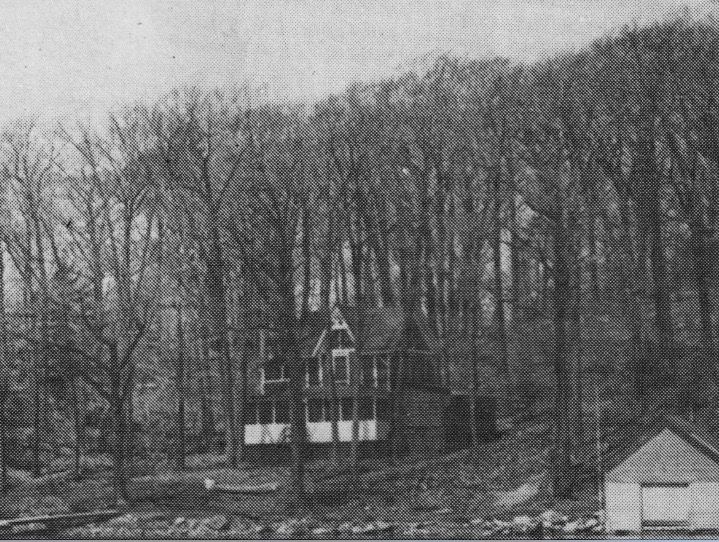
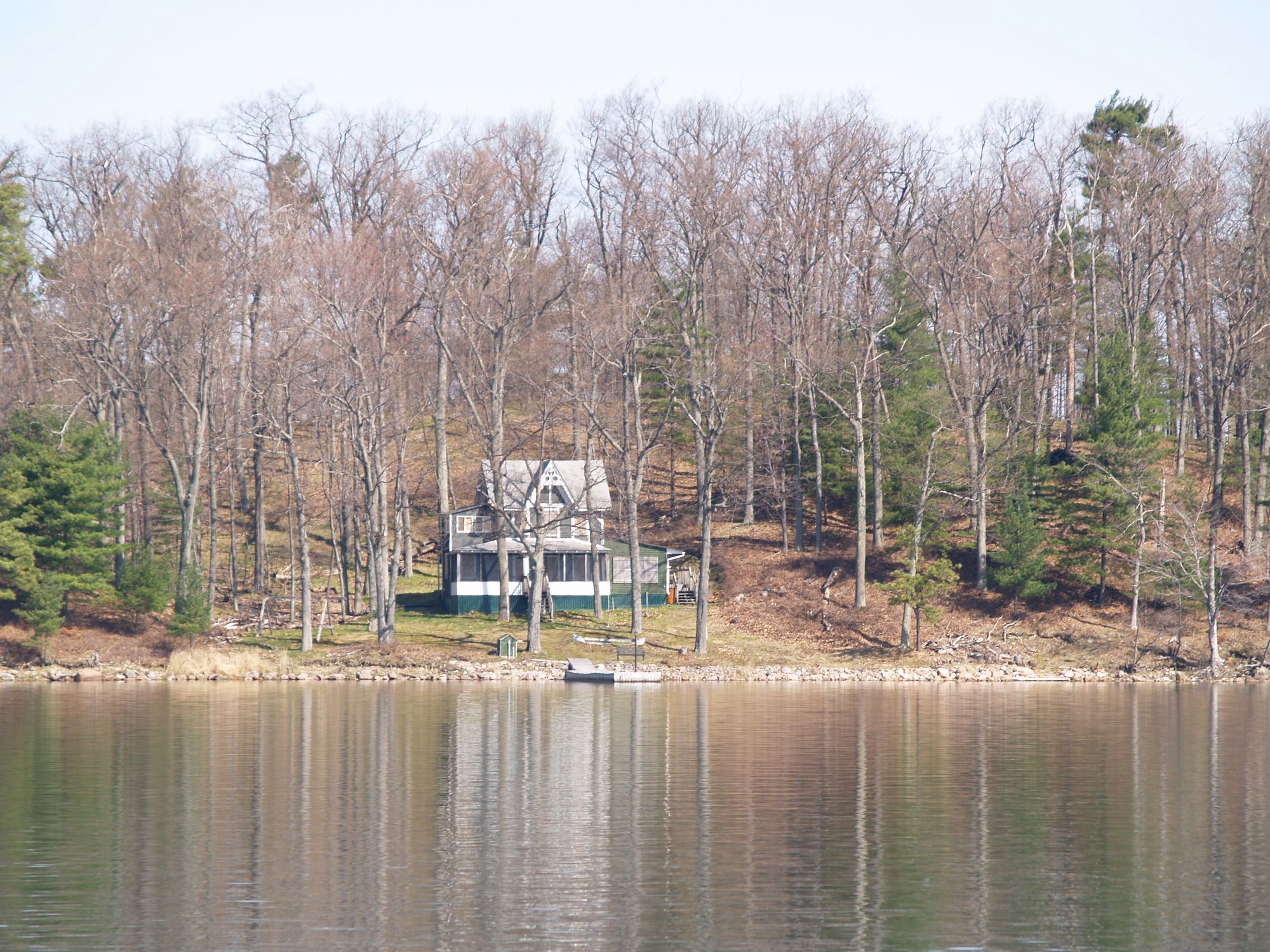
As I searched for descriptions of the cottages, I found fascinating details about the Spicers and Watsons. I’d assumed that the “Hon.” in front of Henry Spicer meant he was a judge, but as it turns out, it was because he had been an assemblyman in the New York State Assembly. He served only one term, but claimed one term was enough for a man who had any business of his own.
Besides his brief stint as an assemblyman, Mr. Spicer was active in the National Republican Party since its formation in 1854. In his lifetime, Henry Spicer was present at the inauguration of every Republican president from Lincoln to Taft. (9 Presidents in all: Lincoln, Grant, Hayes, Garfield, Arthur, Harrison, McKinley, Roosevelt, and Taft)
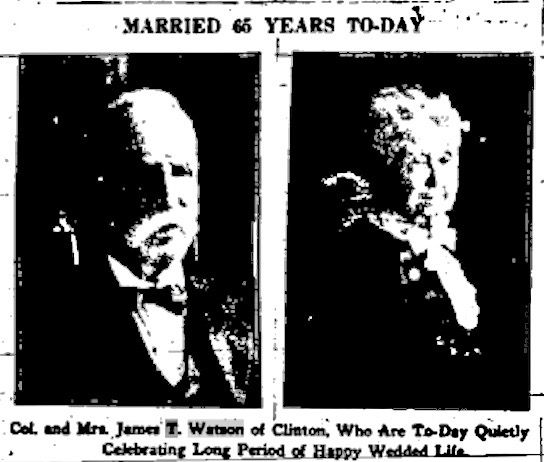
In 1906, there was an article in the Watertown Reunion entitled, “An Aged Horseman,” which recounted that the 86-year-old had hitched his horse to a sulky and drove a quarter-mile in 38.5 seconds. The article went on to declare: “This is not a fast time, but the man at that age who can mount a sulky behind a good horse are few and far between.”
Ten years later, the Hon. Spicer made the news again, but this time for his process with a horseless carriage. “For three-quarters of a century, Henry Spicer, of Dexter, rode behind the fastest horses he could buy or raise. Now Mr. Spicer owns a Jeffery touring car and recently had the honor of being the oldest citizen of the State of New York to take out an automobile license. This is Mr. Spicer’s second year as a motorist, with 5,000 miles to his credit last season.” A Chicago newspaper postulated that perhaps he was, “the oldest licensed motorist in the Union.”

As soon as I started researching Col. Watson, I immediately noted that the two gentlemen had a lot in common. Both were active in the Republican Party. Both were praised as pillars of their communities. Both were fond of fast horses. And, both loved fishing and lived in to their nineties, enjoying summering on Hemlock Island. I had to wonder if they knew each other before they built the cottages. They lived about 150 miles apart, but perhaps Col. James T. Watson met the Hon. Henry Spicer at a Republican Committee meeting.
Col. Watson was a staunch abolitionist. His home in Clinton, NY was a station on the famous Underground Railroad. A Utica Herald Dispatch article reported that, “. . . an escaping Negro was always safe under his roof and many of the race owes him much for acts of kindness.” Like thousands of others, Colonel Watson became stirred with patriotism at the time of the Civil War. He first enlisted to assist in quelling the draft riots of New York City in 1863. Later, he became prominent in the Home Guard, where he acquired the moniker, Colonel. He was a prominent Republican, but also a great admirer of Teddy Roosevelt. He left the party briefly to support Roosevelt in the Progressive “Bull Moose Party” in 1912.

The Colonel’s wife was also politically active. Hannah Watson had the notoriety of being a pioneer in women’s suffrage. A Utica Herald Dispatch article claimed, “She was one of the very first of the local women to come out for suffrage and helped form the Political Equality Club. If you doubt that she has good and sufficient arguments for her stand, try and convince her that she is wrong. A wonderfully preserved woman, keen in every sense of the word, a great reader, she has facts upon facts that are almost undisputable as to why women should be given the ballot and she is ever ready to make a convert for the cause. If all suffragists were as well posted in the matter as is Mrs. Watson and as able to clearly explain it, the state of New York would give them the ballot at the next election.”
According to On the St. Lawrence, Col. Watson greatly improved his property in 1892 by building a 140-foot dock. The dock was large enough for steamers on the outside. On the inside of the dock, he built a “commodious” boathouse with a slip for his new yacht, which was probably christened, Clinton. To round off the new addition was a fine flagstaff.
In June of the same year, the Colonel wrote to the paper that “A veritable seal of medium size sported in the River within six rods of my dock last week, Thursday afternoon. It disappeared in the direction of Round Island. This is not a ‘fake.’” Three other startled observers saw the seal distinctly that same day. Turns out that the seal was one of several that had escaped from an “aquarium enclosure” owned by George Boldt.
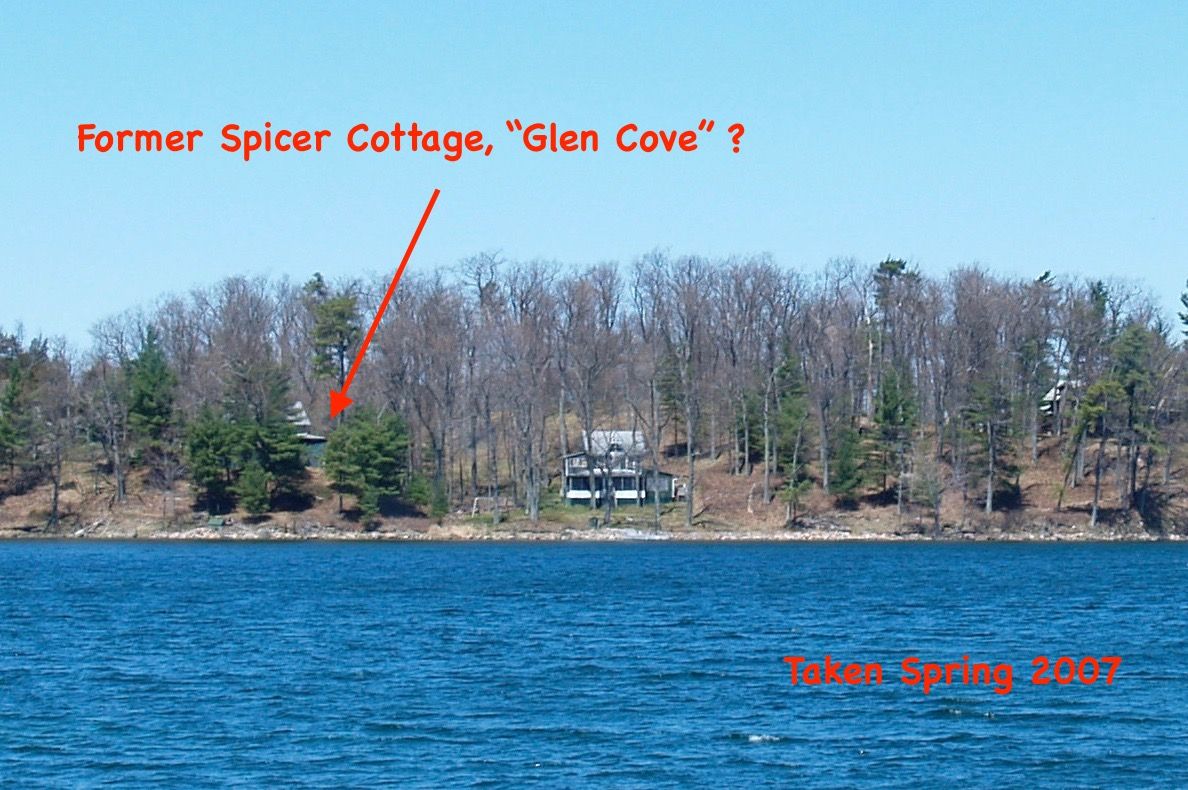

I’m sure that anyone on Murray would have believed the Colonel because he was known as a man of honesty, integrity, and great patriotism. The Utica Herald Dispatch claimed, “In all public events the figure of Colonel Watson has been a familiar one mounted on a fiery steed as he led more parades in Clinton than any other man and no event was complete without the Colonel as grand marshal. At the time Clinton observed its centennial, in 1887, he was the grand marshal of the day and led the mammoth parade, which was reviewed by President Grover Cleveland.”
There is no doubt that the Hon. Henry Spicer and Col. James T. Watson were friends. In 1894, Spicer’s daughter married Watson’s son. “In Glen Cove cottage at Murray Hill Park, a delightful summer resort opposite Thousand Island Park, St. Lawrence River, there occurred at noon Tuesday, a quiet but most romantic wedding by which Miss Carrie Spicer, a daughter of the Hon. Henry Spicer, of Perch River, and Mr. Frank F. Watson, of Clinton, were united in the holy bonds of matrimony. The cottage was artistically decorated with ferns and potted plants. The affair was a very quiet one, only relatives of the contracting parties being present, and the impressive ceremony was performed amid the quiet scenes of a beautiful spot, by Rev. Richmond Fish of Boston.”

I started this project hoping to be able to shut my eyes and envision how the island to our north looked in 1881, 1893, 1904, and 1912. Now, I can picture the cottages on the shoreline. But the history of our islands goes far behind the cottages perched on the rocky shores or the boats that dot the water. Now, when I look out my bedroom window at night, I can envision a suffragist, a newlywed couple, a man watching a seal swim by his dock, and two ninety-year-olds debating the Bull Moose Party. Woven into the rich tapestry of our shared history are the interesting characters and the stories of their summers on the St. Lawrence.
By Lynn E. McElfresh, Grenell Island
Lynn McElfresh delights us every single month... this month's article is just as wonderful as her first, written in August 2009. She has taken us on so many journeys into the past as well as introducing us to some amazing people, places and things! This one hits the mark once again. (See her first 109 articles here!)
Lynn came to Grenell Island for the first time to meet her fiancé’s family, in 1975. She became part of the family, and the island became part of her life. Lynn and her husband, Gary, spend their summers in the Thousand Islands and their winters in Dunedin, Florida. To see the rest of Lynn’s island experiences, search our new TI Life format under Lynn McElfresh.
Lynn has also written two novels in a series of nine novels about life in the Islands from 1883 t0 the 1960s. The third book, Grenell 1904, is in the cover design stage and will be available soon and the fourth, Grenell 1912, is well underway.
See All About Lynn McElfresh & Her Books, in September, 2020 issue of TI Life.
Posted in: Volume 15, Issue 11, November 2020, People, Places, History
Please click here if you are unable to post your comment.
